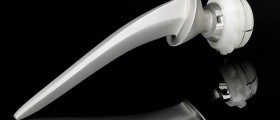Bone Spurs
Osteophytes, more commonly known as bone spurs, occur when the body tries to heal a portion of a bone and creates a sort of splinter that extends from the bone. Although bone spurs may develop on any of the body's many bones, they are most common in joints or in places that are regularly under a lot of pressure, such as the feet, hands, elbows, and knees. Usually, bone spurs will go away on their own. However, a bone spur can become particularly painful when a shoe or other bit of clothing presses against it and causes the nerve endings around it to become damaged. This may require surgery to correct.
Adoctor will typically examine the location of the bone spur to determine the extent of the pain felt by the patient. An x-ray of the area will usually be taken to confirm the location and size of the bone spur and a course of action will then be decided upon. This may mean a surgical procedure to remove the bone spur entirely.

The surgeon will either perform an invasive surgery, which means making an open incision to directly remove the bone spur, or they might perform an arthroscopic surgery, which involves using miniature surgical equipment to remove the bone spur through a very small incision, aided by a tiny camera.
A foraminotomy is a procedure where the gaps through which the nerve roots leave the spine are widened to relieve the pressure on the nerves. Bone spurs on the spine can be the cause of this pressure. Alternatively, via a procedure called a laminotomy, the space around the affected neural tissue can be enlarged, which in turn reduces the pressure on the nerves themselves and alleviates pain.
Other Forms of Treatment
Occasionally, sufferers of bone spurs can simply wait for them to disappear after some resting of the affected joint or bone. Injections of cortisone can help alleviate bone spurs, as well as some non-prescription medications. Exercise is another treatment that doctors may recommend, as long as the exercise does not aggravate the pain.
- Low-dose RT was performed twice a week with one 6-MV photon field. Ten fractions of 0.5 Gy were applied to a total dose of 5 Gy. The evaluation was done on completion and during follow-up using the four-scale von Pannewitz score.
- On completion of RT, 27 patients were free of pain, 40 were much improved, 31 reported slight improvement, and 19 experienced no change.
- After a mean follow-up of 20 months, 75 out of 100 patients were free of pain, twelve had marked and three had some improvement. Ten patients reported no change of symptoms. Mean duration of pain before RT was 6 months. RT applied
- By contrast, an interval of > 6 months until the initiation of RT resulted in only 73% of patients with clinical improvement. Low-dose RT reveals a benefit in > 80% of the patients.
- RT should start during the first 6 months of symptoms.
Prevention is always preferable to the treatment of existing problems. Since bone spurs are typically caused by pressure on particular bones, the obvious solution is to relieve this pressure. Some footwear can place excessive force on certain joints which can lead to bone spurs. Also, tight-fitting clothing can aggravate existing bone spurs by rubbing against them.
- medlineplus.gov/ency/article/007389.htm
- www.nhs.uk/conditions/osteophyte/
- Photo courtesy of Anne Nygård via Unsplash: unsplash.com/photos/_W94Eb1iNYc












-Causes,-Symptoms,-Diagnosis,-Treatment_f_280x120.jpg)




Your thoughts on this
Loading...